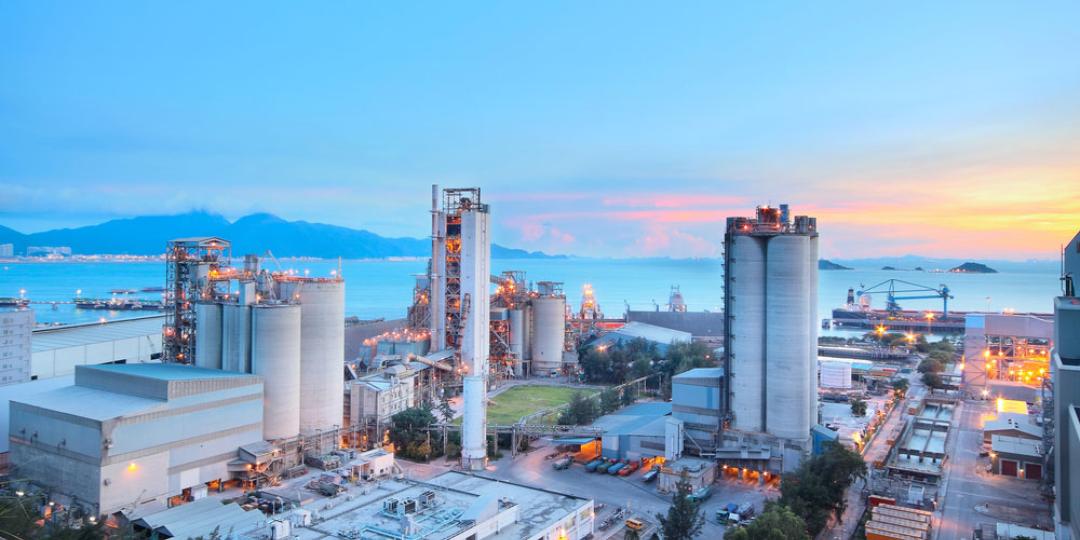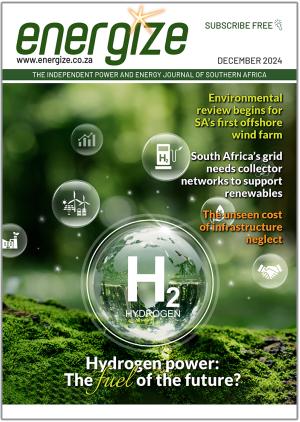by Fanele Mondi, Energy Intensive Users Group
Energy is the engine for economic growth and development in our country and requires an enabling electricity supply industry. To foster the prosperity of all South Africans, a reliable electricity supply, stable electricity costs and the decarbonisation of the economy is essential. Added generation and own-use generation capacity will assist to close the national electricity supply deficit.
It is, therefore, encouraging that Government intends to increase the generation licence threshold from 1 MW to 100 MW. This is a material step forward in transforming our electricity supply industry (ESI) and closing the short-term energy deficit.

The unreliability of Eskom supply, resulting in regular load shedding and energy shortages, is detrimental to local production and a stable economy. The high electricity price increases over the last 13 years, coupled with slow economic growth, have severely affected business competitiveness and prosperity, and make it difficult to conduct operational planning and motivate for investment in new growth opportunities.
Large electricity consumers are investigating and developing alternative electricity supply options to mitigate production disruptions, above-inflation tariff increases and to accelerate the decarbonisation of their operations. However, potential large-scale own-use generation has been hampered by the complex permitting and licensing regime and, in turn, has discouraged or at least reduced investments at this level.
The higher threshold will have numerous benefits for Eskom itself, for own use generating consumers, other large users, and the general public.
A key advantage will be the direct investments and job creation during the construction of new generation capacity, with additional expenditure on goods and services during operation. Another is that South Africa would develop a potential competitive advantage by exploiting the abundant land, wind, and solar resources with which we are blessed. Most of the own-use generation projects are likely to be for renewable energy that will enable the transition to lower-cost, lower-carbon electricity provision as a strategic input for consumers.
The decarbonisation of companies’ operations will help them to attract investment and to meet the product needs of their customers under the growing environmental, social and governance pressures. This change in policy should have a positive effect on electricity costs and introduce a level of price certainty for own use generating consumers.
By closing the energy supply deficit, Eskom would be able to reduce load shedding and energy shortages. Currently, Eskom is forced to use expensive emergency power by running diesel open cycle gas turbines in excess of their designed capacity. The higher threshold will prevent these high costs and reduce volatility in price increases. The net effect of improved reliability and contained electricity costs will be improved economic performance for all consumers and the country. Own-use generation will free up Eskom supply capacity that could be redirected to stimulate economic growth, while also giving Eskom the much-needed time to perform regular maintenance and execute much needed refurbishment projects.
Where deployment is close to large energy users’ operations, local employment and supplier development would result and capacity stresses on Eskom transmission lines would be limited. For mines – especially underground and deep level – it can form an anchor in post-closure economic plans.
Although this revision of the threshold limit is a progressive step towards improving and mitigating some energy supply challenges, more changes are needed to unlock the ESI’s inherent potential and enabling policy and regulatory dispensations for own-use generation. A number of actions need to be considered and expedited as a matter of urgency. Should the lifting of the licensing threshold result in significant new investment in renewable generation, it will have to be accompanied by regular updating of the Integrated Resource Plan (IRP) to ensure that the required investments are made to balance the renewables and maintain grid stability. In this regard, there have been calls for bi-annual updating of the IRP with public participation on input assumptions and policy adjustments.
Further electricity market liberalisation will be required to de-risk willing buyer/willing seller investments in generation. Renewable generation technologies are capital intensive and lending institutions will price in the Power Purchase Agreement (PPA) underwriting risk of single off-takers, being exposed to commodity prices, exchange rate fluctuations and possibly a remaining plant life of less than the typical PPA tenure of 20 years. In the absence of a market where many suppliers and many off-takers participate, the exposure is the full contract value, versus market-to-market.
With an increasing number of generation participants in the industry the need for easy access to the networks becomes increasingly important. This necessitates urgent improvement and standardisation of the current wheeling arrangements into a single coherent framework, spanning both Eskom and municipal distribution systems.
Finally, the establishment of an independent market operator, possibly under Eskom transmission, should be expedited to ensure fair market operation while also ensuring that consumer interests are protected.
Given that any new energy generation will take some time to come online, load shedding continues to be likely and detrimental to the country. Eskom must therefore expedite and radically enhance its maintenance recovery programme, as poor maintenance and plant unpredictability is a major contributor to current load shedding. Equally important is the delivery of the risk mitigation projects which are also intended to close the short-term energy deficit. Appropriate risk mitigation plans will have to be considered that will ensure the delivery of this much needed energy in case any of the bidders fail to deliver or experience delays in delivering the projects. The approval of own-use generation will not, on its own, result in the immediate end to load shedding, as the development and execution of these projects will take some time.
While these transformative steps will make a significant difference, there is an urgent need to collectively shape the future of our ESI and ensure a just energy transition for the benefit of all stakeholders. Within this process, it will be important to address climate change through the decarbonisation of our value chains through a change in energy mix in favour of less carbon-intensive generation technologies. This transition has to be made in a sustainable manner that ensures energy security, system reliability and price affordability. As Eskom alone cannot deliver this, the public and private sectors will be required to play a significant role in co-creating the future ESI. Legislation and regulations need to be eased to fit this changing landscape and create an enabling ESI. A well-coordinated, inclusive, transparent, and beneficial process for all stakeholders will be vital to define a collective ESI vision and strategy.
About EIUG
Fanele Mondi is the CEO of the Energy Intensive User Group (EIUG), a not-for-profit company (NPC) whose members account for over 40% of electricity consumed. contribute over 20% to GDP and employ over 650 000 people across multiple sectors.
Contact EIUG, info@eiug.org.za, www.eiug.org.za















